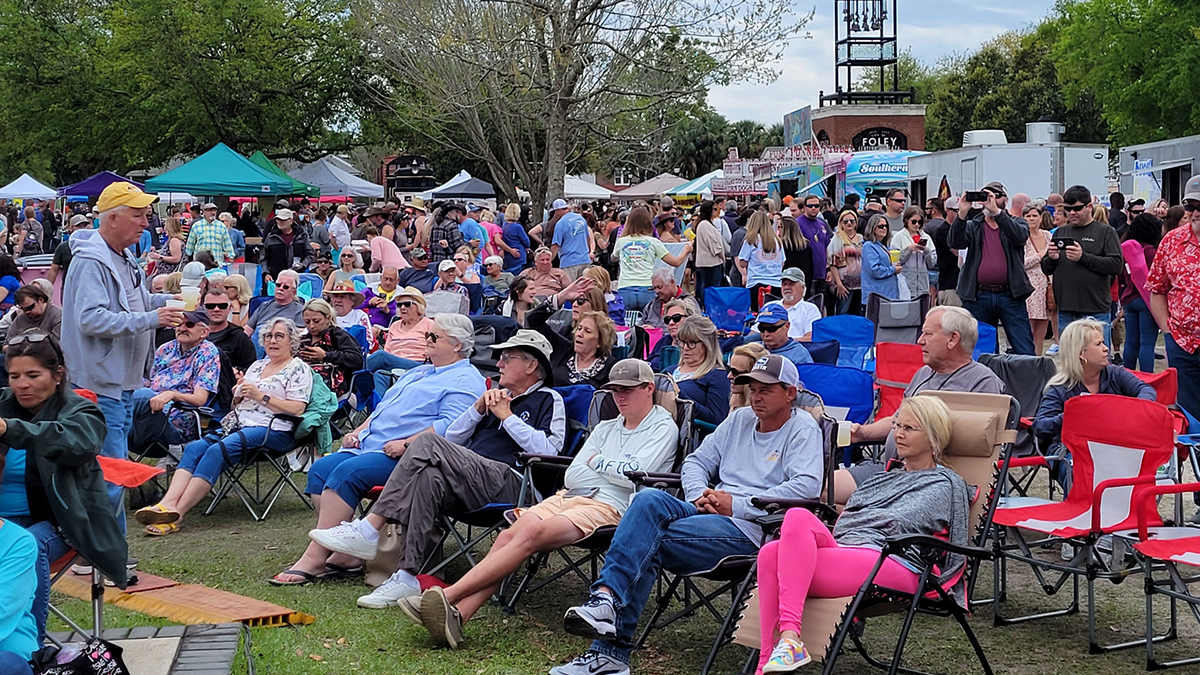Worlds of Opportunity provides look into future for Southwest Alabama students

Nearly 10,000 southwest Alabama eighth-graders grabbed a sneak peek this week at hundreds of employment options awaiting their future during the Southwest Alabama Workforce Development Council’s (SAWDC) sixth annual Worlds of Opportunity Career Expo.
The two-day event, which concluded Thursday at the Mobile Civic Center, attracts public and private schools students from eight Alabama counties and immerses them in a hands-on, interactive career exploration experience led by business professionals representing 13 key industries.
Launched in 2010, SAWDC’s Worlds of Opportunity pulls together more than 170 regional companies to develop and staff the “worlds” visited by students. Each world is led by a chairperson, called a “World Leader,” responsible for engaging companies within the respective industry to create the central element of the expo – the hands-on activities.
From taking a turn in front of or behind the camera with a television station in the World of Communication, to simulating replacement of a blown fuse as an electrical lineman in the World of Energy SAWDC’s expo is a model for its immersive environment that seeks to match natural inclination and available training programs with industry needs.
Larry Mouton, Mobile County Public Schools System’s executive director of career and technical education, said there’s no question the 2015 outing is “bigger and better than we’ve ever seen before” and that “students will see something different in every world.”
“The most obvious (2015 upgrade) is in the public service world, where you’ll see reenactments of crime scene and forensic investigations,” Mouton said.
SAWDC Executive Director Laura Chandler said the biggest change to the 2015 lineup has been the addition of the 13th, “Computer and Information Technology World,” in direct response to industry demand. The other 12 worlds are:
- aerospace
- automotive technology
- communication
- construction
- energy
- engineering and design
- healthcare
- hospitality and tourism
- manufacturing
- shipbuilding and repair
- public service
- safety.
Tom McNeal, a workforce development specialist with Southern Company Services in Birmingham, has been an enthusiastic Worlds of Opportunity participant since its inception because it exposes students to myriad career paths at a pivotal – and strategic – point in their education.
All Alabama eighth-graders, he said, are required to take a career-interest inventory to highlight potential skills. Students are expected to choose a “career pathway” beginning with their ninth-grade year. The choice doesn’t necessarily lock students into a particular field of study but is intended to play to their strengths.
“How do you choose something as important as a potential future career if you’ve never touched it?” McNeal asked, noting most people would never consider buying a house without having an inspection conducted or think about purchasing a car without a test drive.
“Worlds of Opportunity is so amazing because it helps these kids feed those decisions,” he said. “They get to talk to people – real people who live in their own communities – who are actually doing these real-world jobs. They learn what it takes, if they feel comfortable in a particular setting, what the jobs pay and, even more important, if they enjoy these careers.”
From a practical standpoint, McNeal said, the event is often the first exposure many students have to realistic pay scales.
“They have no concept of where to start that conversation, but they can walk in here and find out that with a two-year degree they can pull down, say, $25 to $27 per hour,” he said, using Alabama Power’s current salary for instrumentation and control specialists.
That position is currently in low supply and high demand and is considered a “critical skills set” needed at all of the utility company’s power plants, he said.
(Click here to view the 2015 Worlds of Opportunity Student Booklet, providing overviews of each of the 13 worlds, complete with sample job descriptions, salary ranges for an array of jobs per sector and a breakdown of the educational paths needed to reach each benchmark.)
“At the end of the day, everybody has a place,” McNeal said. “The challenge is helping students figure out where that place is, and Worlds of Opportunity exposes them to hundreds of options they probably had no idea even existed. It’s my job to help (students) understand what (they) need to do to get there.” Another part of his job, McNeal said, is to “dispel some of those myths” about who may or may not be suited to which positions.
“You may see more female nurses than male nurses or more male (electrical) linemen than female linemen, but we’re here to help the students figure out what excites them and how to build the life they want around the career that’s right for them,” McNeal said.
And the results to date are hard to ignore.
Consider for instance the number 3,900.
That’s the percentage increase in industry-recognized certifications earned by Mobile County Public Schools System students in 2014 as compared with 2010.
More specifically, only 300 certifications were earned by those students in 2010, the year Worlds of Opportunity debuted. Mouton said that figure rose in 2014 to 12,000 certifications, and while several factors have contributed, none have had the direct impact of Worlds of Opportunity.
“This event has become an invaluable tool because we’ve been able to take the feedback we get and in our curriculum put more of an emphasis on our relationships with industry and what industry needs,” Mouton said. “On the other side, it shows the students that they need these foundational skills, and it gives them a starting point.”




















